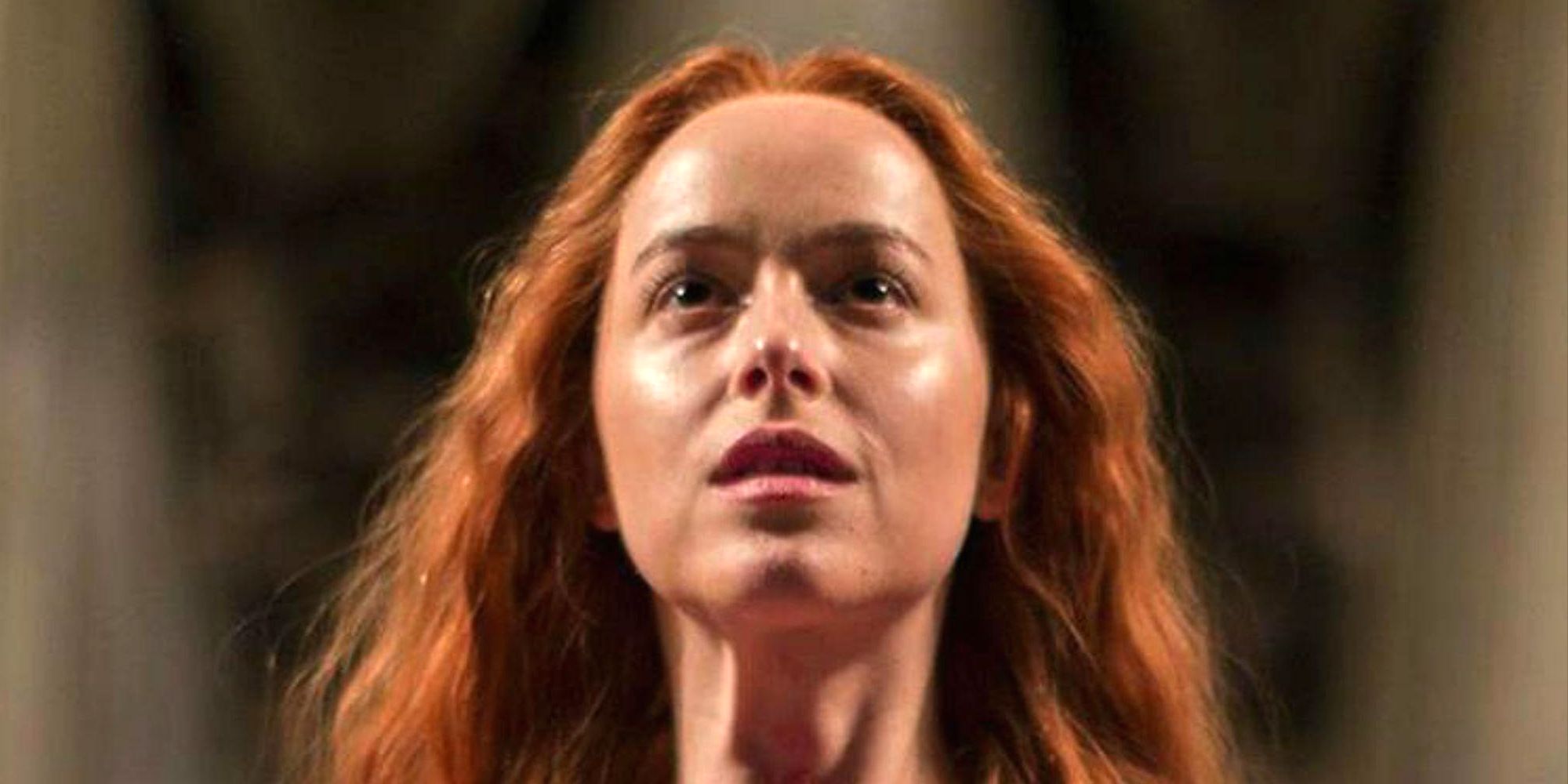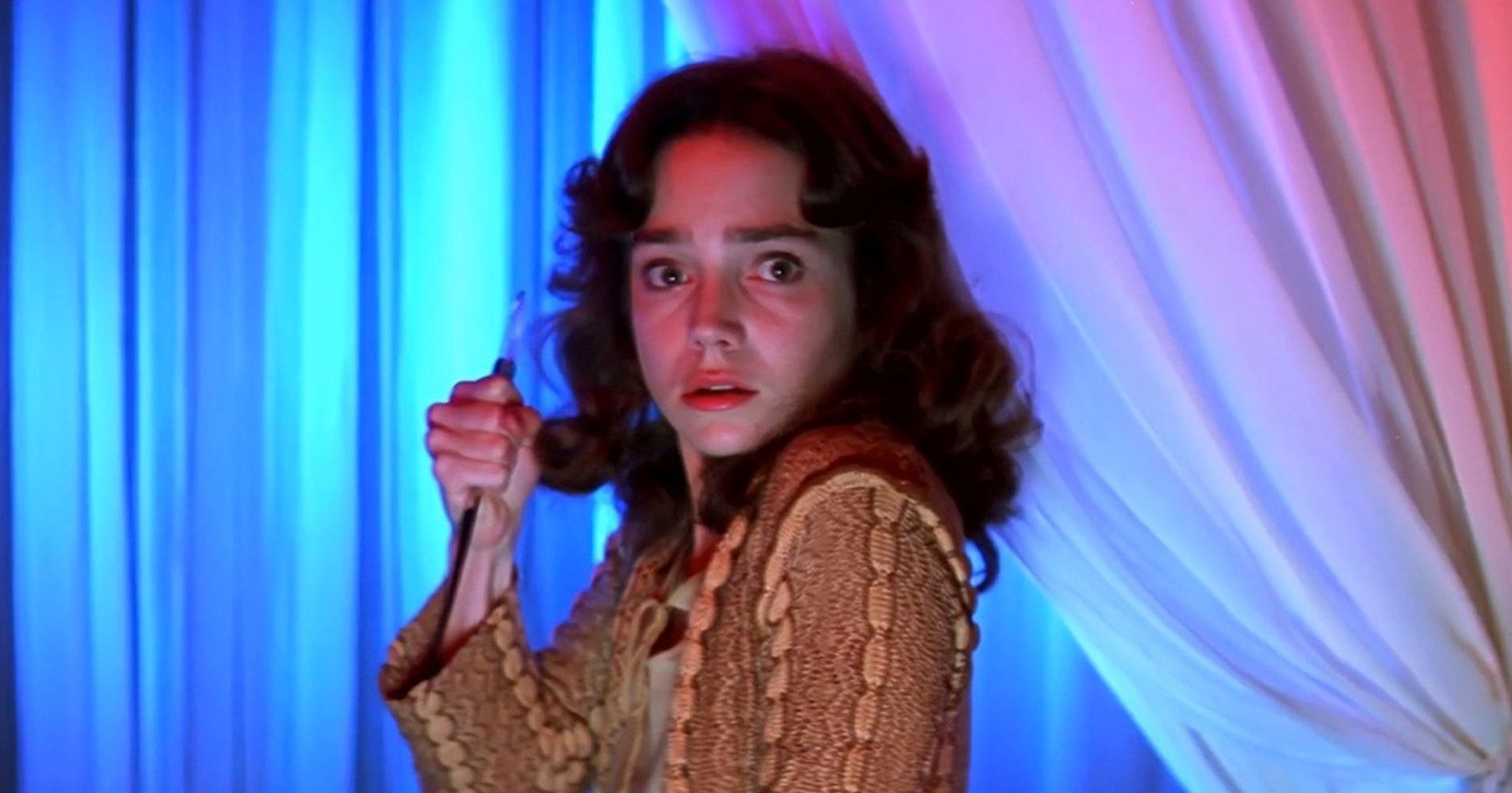
The Suspiria remake (2018) flipped the script on the original movie, changing how the final scenes play out. Even director Luca Guadagnino admits it's more of a "homage" than a remake.
Many horror fans had doubts about a remake of Suspiria. After all, the original Suspiria (1977), directed by Dario Argento, is an unforgettable classic in its own right. Its garish colors, brutal death scenes, and haunting soundtrack have made it a cult classic. This is why, when the remake was announced, people were understandably wary of the new movie, including Argento himself.
Argento's Suspiria follows Suzy Bannion (Jessica Harper), a young American ballet student, as she arrives at the prestigious Freiburg Dance Academy. After she moves in, strange things begin to happen and she hears rumors of witches living in the building. Soon after that, her friend Sara goes missing. While looking for Sara, Suzy discovers a secret room where she hears her dance instructors, Miss Tanner and Madame Blanc, plotting her death. She flees, but ducks into another room when she sees Sara's disfigured corpse. Inside, she is confronted by Helena Markos, the centuries-old witch she heard was living in the building. Markos reanimates Sara's dead body to kill Suzy, but Suzy manages to stab Markos and escape into the night while the dance school crumbles and is consumed in fire.

For the first two-thirds of the Suspiria remake, the plot is very similar to the original, but with a different cast. Susie (Dakota Johnson) comes to the school, makes friends with Sara, and strange and disturbing things begin to happen. From there, however, viewers begin to notice there's more going on with Susie (same name, different spelling than the original) than meets the eye. For instance, fairly early in the film, she secretly witnesses some of the dance instructors mocking and torturing some police investigators who come looking for a missing student. As Susie sneaks away, instead of running to tell her friend or trying to flee the school, she laughs to herself and acts as if nothing unusual is going on.
Another early moment has Susie awakening from a dream screaming, "I know who I am!" For astute viewers, this is a telling clue of Susie's eventual transformation. Despite her strict Mennonite upbringing, she has always been drawn to Berlin and doesn't know why. Having finally come to the German dance school, she is beginning to understand. Susie's true identity is revealed to the witch coven and viewers when she comes face to face with Helena Markos, who intends to inhabit Susie's body so that she can live longer. Susie surprises and terrifies the witches when she turns out to be the Mother of Sighs, one of the Three Mothers, the most powerful witches in the world. She kills Markos and summons a demonic familiar to dispatch all of her followers.
This change to the ending is markedly different from the original film. Argento's Suspiria uses the classic final girl trope of an innocent woman who finds herself in a dangerous and horrifying situation, manages to find her strength, and escapes to safety. Guadagnino's Suspiria, on the other hand, is more about a young woman discovering herself and the power she's had all along. Guadagnino expertly subverts the viewers of the original film's expectations by staying close to its plot early on, before delivering its coup de grace of a twist. This makes for a very different movie, which could be why opinions of it have been so polarizing.
from ScreenRant - Feed https://ift.tt/2tXrsHF

0 Comments